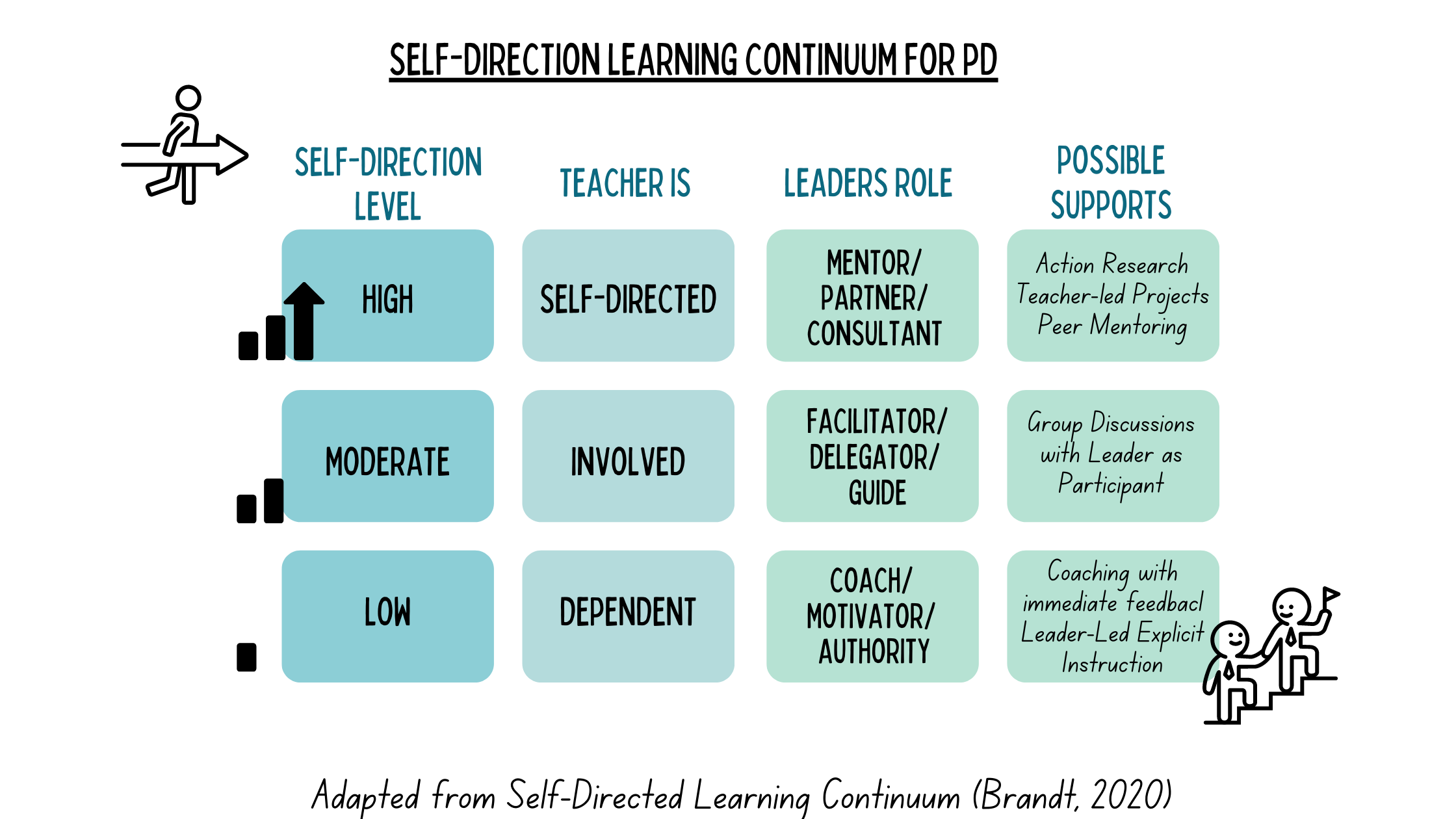Teachers need "Just Right" learning too
2 ways to differentiate Teacher Professional Development in Schools
A saying I heard somewhere,
If you boil an egg, it gets hard. If you boil a potato, it gets soft.
The same process for fundamentally different things gives different results.
The same applies to Teacher Professional Development (PD). I have lost count of how many times I have heard teachers say, “We had to sit through the same PD again this year!”.
One-size-fits-all PD has the power to simultaneously disengage your most capable, experienced teachers and confuse your novice teachers!
As someone who drives PD in our organization of about 250 teachers, I understand that the struggle of differentiating is real.
It is hard to design “just right” PD for all of them. But at the same time, it is extremely important for effective learning.
2 ways to differentiate Teacher PD better:
1. A Systems Approach to Differentiating PD: Tiered PD
What is it:
It is a framework that
helps us target diverse learning needs of ALL teachers.
helps us implement PD in a Tiered-manner of increasing intensity of support
This approach has been inspired by the MTSS Tiered Framework and the tiered-system of job-embedded PD model in this paper Beyond Hammers Versus Hugs: Leveraging Educator Evaluation and Professional Learning Communities Into Job-Embedded Professional Development.
Below is a visually summary of my takeaways:
Why it is useful:
This Tiered approach promotes strategic design that can draw out greater results from our effort. It encourages PD leaders to (a) Prioritize PD content (b) Prioritize resources (time, people, money) for PD based on teacher needs.
We have been implementing this systematically for over 2 years now at our organisation and it has helped use our resources more effectively and better tailor PD to teachers needs.
2. A Teacher-first Approach to Differentiating PD: Self-Directed Learning Continuum
What it is:
This is a framework that
helps leaders think about the level of teacher self-direction
Adapt Support based on teacher levels. Teachers lower on the self-direction scale may benefit from a more structured, coaching relationship while teachers on the higher end of the scale may benefit from a consultant/ mentor/ partner relationship with more autonomy.
The Self-directed learning continuum in this paper: Measuring Student Success Skills: A review of literature on self-directed learning is written as a frame for supporting students, but it also works well when thinking about supporting teachers practically.
Below is a visually summary of my takeaways:
Why it is useful:
“Just right” teacher supports: This frame encourages leaders to think about the best kind of leadership coaching or support for different teachers instead of putting in place a structure that is the same for all.
Leader time management: Coaching and mentoring can be time consuming especially if you have large teams. By figuring out which teachers will need more time-intensive supports and which will benefit from more autonomy, leaders can make best use of their limited time.
An extension of this idea:
Previously, I had written a similar article encouraging educators to think about how much feedback is appropriate for teachers at different stages in their learning journey. You can find the post here: Coaching Teachers: When is feedback most powerful?
Finally, it is important to mention that successful differentiation should be built on a strong foundation of
A strong organisational culture of learning and a clear vision and standards for Good Teaching (we use the Danielson Framework for Teaching)
A supportive environment that enables essential resources like time and promotes a safe, learning-oriented culture
Capable Leadership that can support the design of both theoretical and practical PD






